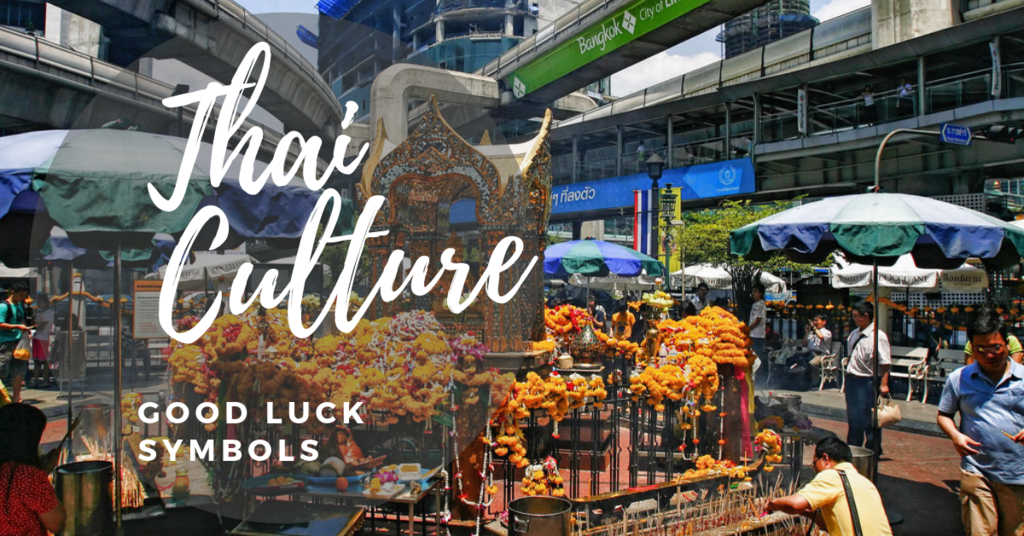There are countless lucky charms and symbols in Thailand that are supposed to bring luck to the wearer. You may have already seen some of them, but you did not know what they meant. In this post, I show you 6 typical Thailand lucky charms that play a big role in the spiritual life of the Thai people.
Six typical Thailand lucky charms that you probably do not know yet
The idea that happiness and wealth come from carrying certain objects and symbols in life, of course, appeals to everyone. Europeans, however, are not really superstitious, but the Thais swear by these rituals. Ghosts, lucky charms and the deep faith of the Thai people play a very important role in the spiritual life of the Thai people. I introduce you to some of these lucky charms that the Thai people believe in.
San Phra Phrom, the ghost houses
Surely you have ever noticed the small temple in front of every house or shop that always has a bowl of travel and a drink on it, right? But do you actually know what it's all about?
These little temples are called "San Phra Phrom" (Phrom Ghost Shrine) and they are ghost houses. The good spirits live in these shrines, bringing happiness and peace to the homeowner and watching over the families. In return, the spirits want to be fed, so you'll always see a bowl of travel and a drink standing by.
These temples are built whenever a house is finished or the owner is changed. The Thais believe that they are thus giving a new home to the souls who lived here, because they have lost their homes and need to be soothed again. Also, the correct placement of the temples is an important issue, because the San Phra Phrom should never be in the shadow of the associated building and should always be aligned so that they are always in the sun. However, before the spirits can enter their new home, a priest must initiate the temple in a special ceremony.
However, you will not only find the San Phra Phrom temples in front of houses, but also in temples, caves and on the streets. When there is a shrine beside the road, the Thais like to honk three times in a row to show their respect to the spirits. Even you as "Farang" can do that without any problem if you drive past one of these shrines.
The Thai people believe in ghosts and the spirit world, because for them they are an invisible companion as a protection to everyday life. So do not be surprised if someone tells you about ghosts and the spirit world.
The sacred phallus symbol
There are many Thailand lucky charms and symbols that bring happiness to life, but one of those symbols is particularly striking. It is the sacred phallus symbol , which in fact has the form of a penis.
If you think that's a joke, you're wrong! This sacred symbol indeed has the shape of a penis! This bizarre form is a Thai lucky charm and guardian angel and is also called "Lingam" .
These forms often stand in caves, in ruins, hang on trees or are hung as necklaces, but what does the symbol actually mean?
According to legend, the famous monk "Luang Phor Nai" first carved such an amulet from the sacred wood of the "Buddha Bodhi tree" and provided it with luck and protective formulas. Since then, the ritual has been continued as the Thais believe that the phallus helps the wearer prosper and succeed.
Maneki Neko, the wink cat

Who does not know her, the winkekatze . A gilded, fat cat, waving his left paw constantly. You've probably already seen these lucky charms in a Chinese restaurant or in a Japanese souvenir shop, right? This cute little kitten is not intended as kitsch, but as a lucky charm.
This lucky charm is not only widespread in China and Japan, but is also becoming increasingly popular in Thailand and can be found in many souvenir shops and restaurants. Waving is not just for fun, as the manekis will bring you luck and money. But not only that, because even in love the cat should fulfill its purpose. The typical Winkekatze is usually colored gold (can also be white), which means that they should bring a lot of money to the owner. However, there is also a pink colored Winkekatze that should do the same thing with love.
It is pure speculation that the Manekis is from the Thai goddess Nang Kwak and was influenced, because there is also a Siamese version of the Winkekatze. In the Siamese version, a young squatting lady asks for gifts, palm down her right arm. However, in order for this to be able to develop the effect as a lucky charm, it must first be consecrated by a monk.
The sacred trees
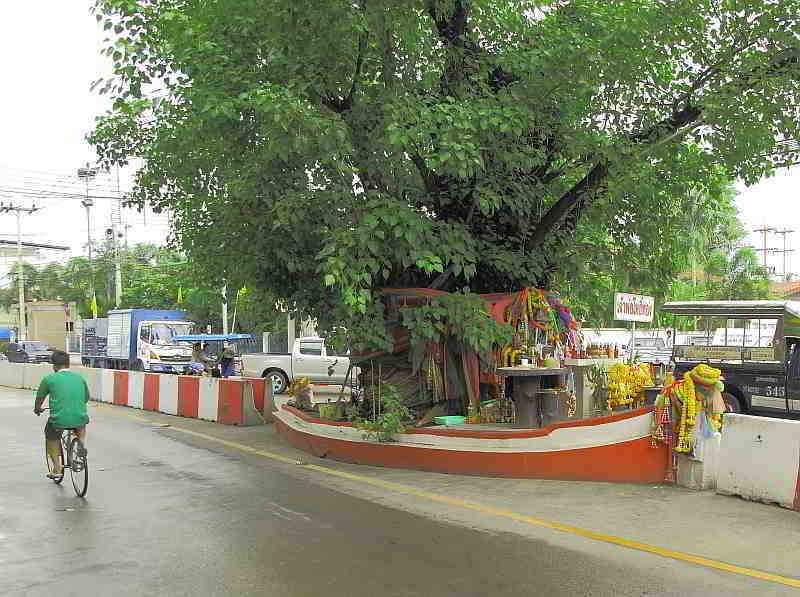
via www.pattayaunlimited.com
As already mentioned, the Thais believe in ghosts and demons. These live mostly in the spiritual houses. But not always. There are also ghosts who live in trees and plants rather than in a haunted house and are therefore under no circumstances tolerated in the house or garden.
Therefore, the so-called "Buddha Tree" plays a particularly important role in the spiritual life of the Thai people . According to a Buddhist legend, Siddhartha Gautama experienced "awakening" and "enlightenment" under a Buddha tree and became a Buddha. Since the Thais firmly believe such legends and would never violate the will of the Buddha, such a tree would never be felled, whether it stands in the way of building a house or a road.
How do you recognize such a "sacred tree"? Maybe at the roadside or in a Thai temple, you noticed trees decorated with colorful scarves? These are the Buddha trees in which the spirits dwell.
Especially in the southern countries and islands on the Andaman Sea, like Phuket , which were affected by the tsunami, can be found on the coastal roads, many of these trees. In these trees, the "good spirits" live and protect the city from catastrophe.
The lucky thread "Sai Sin"
At some Buddha statues or at certain ceremonies in Thai temples one sees a network of strings. These star-shaped strings are stretched a few feet above the ground and touch a Buddha statue in at least one place. This thread is called "Sai Sin" and it stands for the teachings of Buddha. The Sai Sin has the task of protecting the thread-spanned space from evil spirits and keeping them away.
Even when building the house, the Sai Sin is often used. Before entering the house and living in it, the Sai Sin is wrapped around the building in a clockwise direction and then handed over to a monk blessing the building and the people and things living there.
Also at weddings and funerals is the Sai Sin often used. Here he connects the bride and groom or just the coffin and the monk.
You too can easily come to a piece of Sai Sin, just ask the monk for a piece of Sai Sin on your next visit to the temple and he will tie it around your wrist. So you too are blessed and protected from evil spirits. You never know when you need this protection.
Hamsa's hand
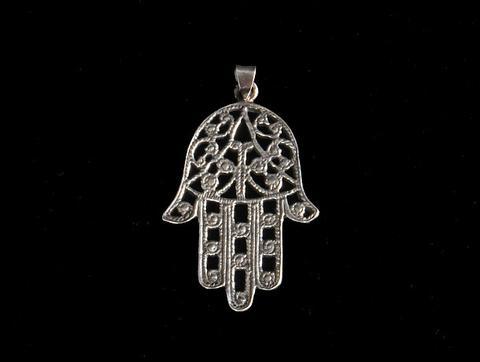
This symbol is very popular in many cultures and religions. Judaism refers to the hand of Miriam, the sister of Moses. In Islam, she is known as the hand of Fatima, named after Muhammad's daughter. In Buddhism and Hinduism, the hand with five fingers stands for five of the seven chakras. It looks like a hand with an open palm, but is represented with two thumbs. The Hamsa hand is to protect against any damage or danger and often comes in combination with the "evil eye". However, in order to be able to provide optimal protection and bring luck, the fingers should point downwards.
Lotus flower as a symbol of purity
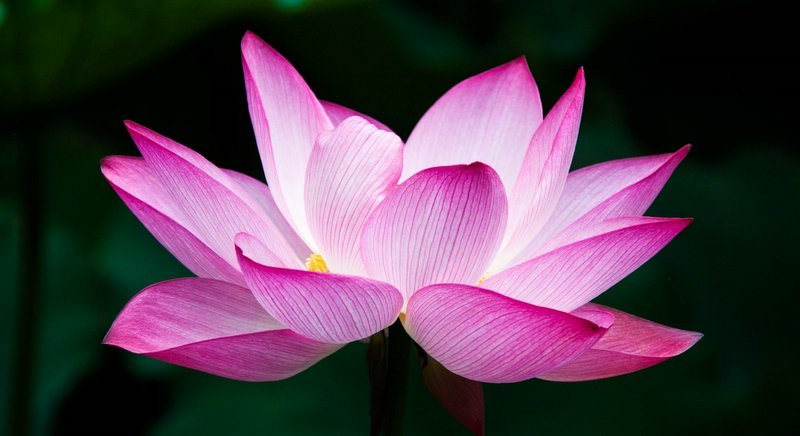
The lotus flower is one of the oldest symbols and has many meanings. It grows in muddy waters, but its flowers are unaffected by the impurity. They swim on the water surface and impress with their extraordinary beauty. The lotus flower in Buddhism symbolizes the purity of the heart and the power of psychological resistance. The symbol stands for rebirth, new beginnings and the way to Nirvana.
Ganesha - The god with the elephant head
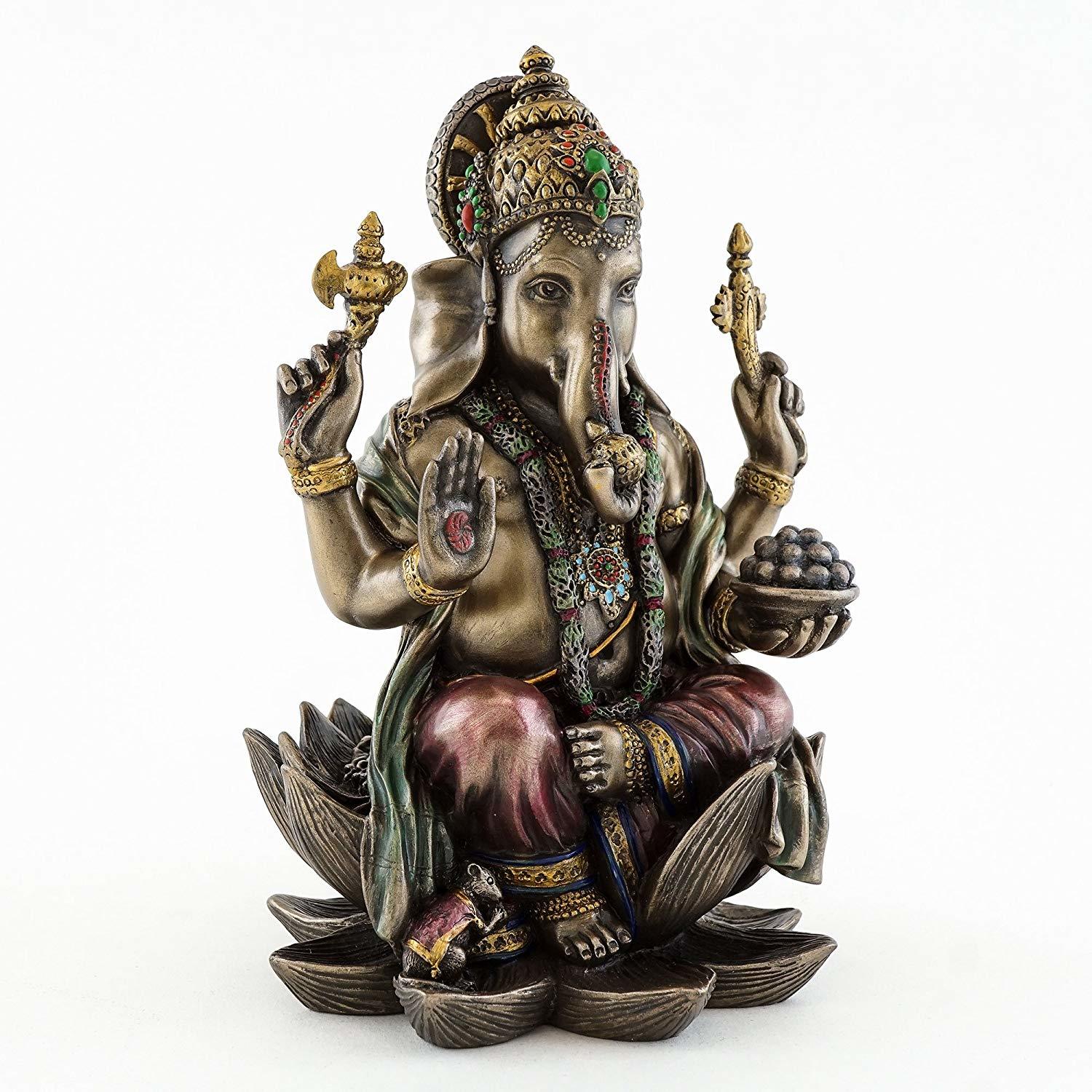
Ganesha is a Hindu god of fortune, but is also worshiped in Buddhism. He is presented as gracious, kind, smart and humorous. One addresses oneself to Ganesha, if one needs luck, success and good success at the beginning of a new enterprise. He is still known as the "Overcomer of Obstacles" and "Destroyer of Evil." His big elephant head means intelligence, his curved trunk is strong and sensitive at the same time. He can distinguish between good and evil.
Phuang Malai, the lucky charm flower necklace
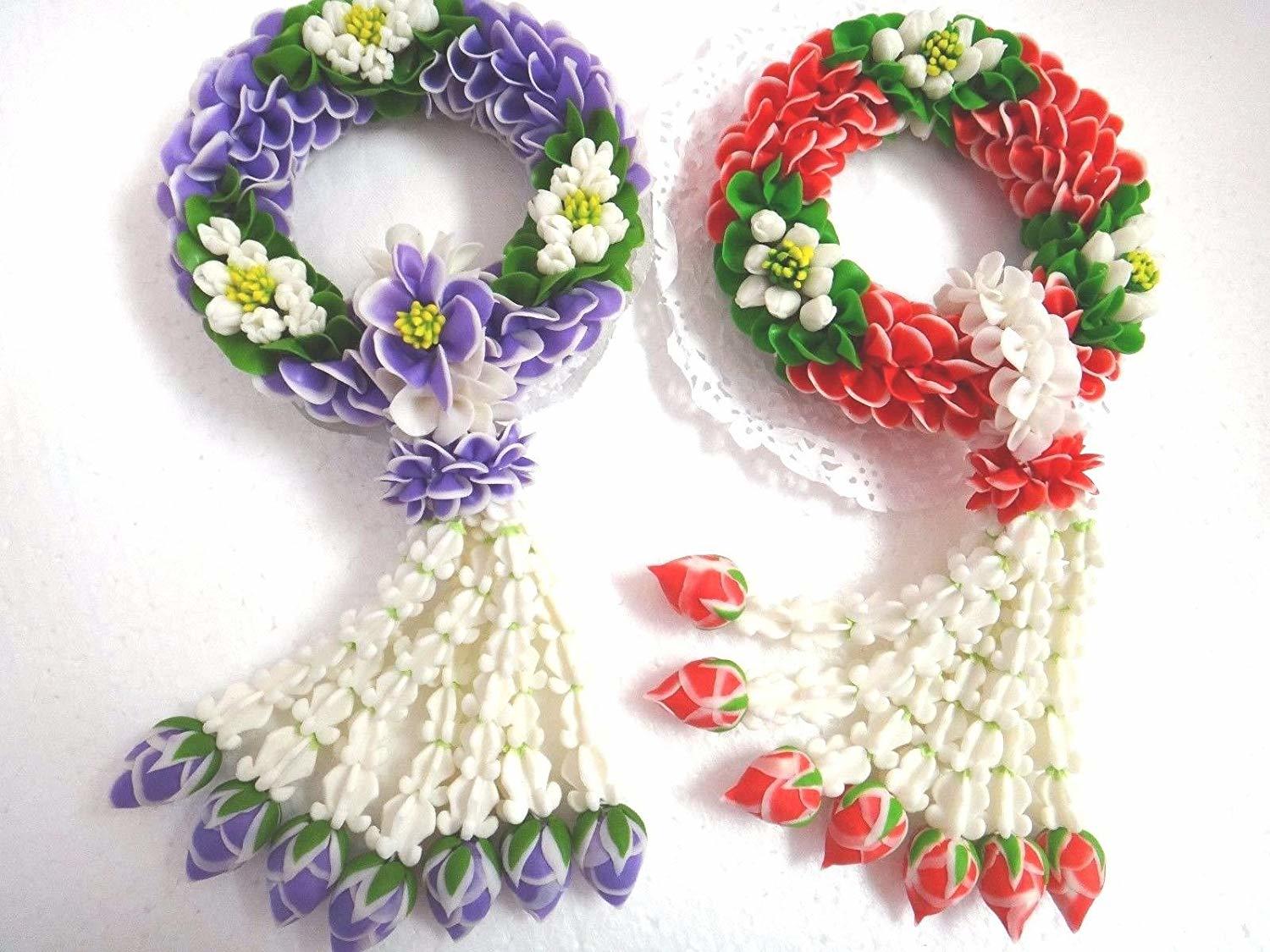
Via www.amazon.ca
Surely you have often noticed the many colorful flower garlands and flower wreaths in Thailand? These ornate flower wreaths are available in Thailand in many places and sold for a few baht. These flower wreaths are known in Thailand as "Phuang Malai" and are in Thailand, but also in many other countries in Southeast Asia, the expression of a cultivated art form with a long tradition.
Originally the Phuang Malai were a gift to the Buddha in the temple, but today they can be used for almost anything. For example, these flower garlands are often given as Mother's Day, reconciliation or simply as a thank-you gift to the dearest among us.
Many motorists hang the Phuang Malai around the rear-view mirror, this should bring them luck while driving. The flower chains are also given as a birthday present, so that the birthday child will have a happy new year. On special occasions such as weddings, etc., the Phuang Malai are also often used as a table decoration, because there are countless types and sizes of floral wreaths.
As you can see, getting happiness and wealth in life is actually quite easy. No problem with these typical Thailand lucky charms! Surely there are many more lucky charms in Thailand, but I do not (yet) know all of them and I'm always looking for new symbols and Thai lucky charms. Other lucky charms from the rest of the world can be found here .
Did you recognize some of the lucky charms from your last trip to Thailand? If you know other typical Thailand lucky charms, then please post them in the comments.Surely you have often noticed the many colorful flower garlands and flower wreaths in Thailand? These ornate flower wreaths are available in Thailand in many places and sold for a few baht. These flower wreaths are known in Thailand as "Phuang Malai" and are in Thailand, but also in many other countries in Southeast Asia, the expression of a cultivated art form with a long tradition.
Originally the Phuang Malai were a gift to the Buddha in the temple, but today they can be used for almost anything. For example, these flower garlands are often given as Mother's Day, reconciliation or simply as a thank-you gift to the dearest among us.
Many motorists hang the Phuang Malai around the rear-view mirror, this should bring them luck while driving. The flower chains are also given as a birthday present, so that the birthday child will have a happy new year. On special occasions such as weddings, etc., the Phuang Malai are also often used as a table decoration, because there are countless types and sizes of floral wreaths.
As you can see, getting happiness and wealth in life is actually quite easy. No problem with these typical Thailand lucky charms! Surely there are many more lucky charms in Thailand, but I do not (yet) know all of them and I'm always looking for new symbols and Thai lucky charms. Other lucky charms from the rest of the world can be found here .
Did you recognize some of the lucky charms from your last trip to Thailand? Are you planning a trip to Thailand? If you know other typical Thailand lucky charms, then please post them in the comments.

